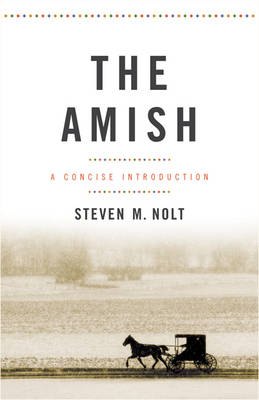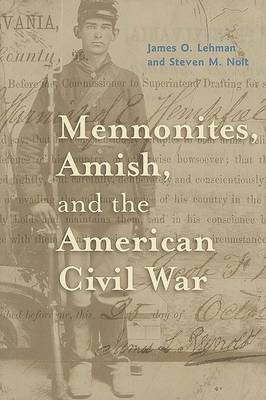Young Center Books in Anabaptist and Pietist Studies
3 total works
There seems to be no end to our fascination with the Amish, a religious minority that has both placed itself outside the mainstream of American culture and flourished within it. Yet most people know very little about the nuanced relationship the Amish have with society or their own communities. Drawing on more than twenty years of fieldwork and collaborative research, Steven M. Nolt's The Amish: A Concise Introduction is a compact but richly detailed portrait of Amish life. In fewer than 150 pages, readers will come away with a clear understanding of the complexities of these simple people. Writing in engaging and accessible language, Nolt explains how the Amish at once operate within modern America and stand very much apart from the world. Arguing that Amish life is shaped equally by internal and external social, political, and economic contexts, Nolt explores Amish identity as emerging from a complex cultural negotiation with modernity. He takes on much-hyped topics such as Rumspringa and reveals the distinctive Amish approach to technology.
He also explains how Amish principles stand in contrast to contemporary American values, including rational efficiency, large-scale organization, and Western notions of individuality. Authoritative, informative, and illustrated, this guide provides a vivid introduction to a way of life many find fascinating but few truly understand.
He also explains how Amish principles stand in contrast to contemporary American values, including rational efficiency, large-scale organization, and Western notions of individuality. Authoritative, informative, and illustrated, this guide provides a vivid introduction to a way of life many find fascinating but few truly understand.
Mennonites, Amish, and the American Civil War
by James O. Lehman and Steven M. Nolt
Published 31 December 2007
During the American Civil War, the Mennonites and Amish faced moral dilemmas that tested the very core of their faith. How could they oppose both slavery and the war to end it? How could they remain outside the conflict without entering the American mainstream to secure legal conscientious objector status? In the North, living this ethical paradox marked them as ambivalent participants to the Union cause; in the South, it marked them as clear traitors. In the first scholarly treatment of pacifism during the Civil War, two experts in Anabaptist studies explore the important role of sectarian religion in the conflict and the effects of wartime Americanization on these religious communities. James O. Lehman and Steven M. Nolt describe the various strategies used by religious groups who struggled to come to terms with the American mainstream without sacrificing religious values-some opted for greater political engagement, others chose apolitical withdrawal, and some individuals renounced their faith and entered the fight.
Integrating the most recent Civil War scholarship with little-known primary sources and new information from Pennsylvania and Virginia to Illinois and Iowa, Lehman and Nolt provide the definitive account of the Anabaptist experience during the bloodiest war in American history.
Integrating the most recent Civil War scholarship with little-known primary sources and new information from Pennsylvania and Virginia to Illinois and Iowa, Lehman and Nolt provide the definitive account of the Anabaptist experience during the bloodiest war in American history.
Plain and simple. American popular culture has embraced a singular image of Amish culture that is immune to the complexities of the modern world: one-room school houses, horses and buggies, sound and simple morals, and unfaltering faith. But these stereotypes dangerously oversimplify a rich and diverse culture. In fact, contemporary Amish settlements represent a mosaic of practice and conviction. In the first book to describe the complexity of Amish cultural identity, Steven M. Nolt and Thomas J. Meyers explore the interaction of migration history, church discipline, and ethnicity in the community life of nineteen Amish settlements in Indiana. Their extensive field research reveals the factors that influence the distinct and differing Amish identities found in each settlement and how those factors relate to the broad spectrum of Amish settlements throughout North America. Nolt and Meyers find Amish children who attend public schools, Amish household heads who work at luxury mobile home factories, and Amish women who prefer a Wal-Mart shopping cart to a quilting frame.
Challenging the plain and simple view of Amish identity, this study raises the intriguing question of how such a diverse people successfully share a common identity in the absence of uniformity.
Challenging the plain and simple view of Amish identity, this study raises the intriguing question of how such a diverse people successfully share a common identity in the absence of uniformity.


